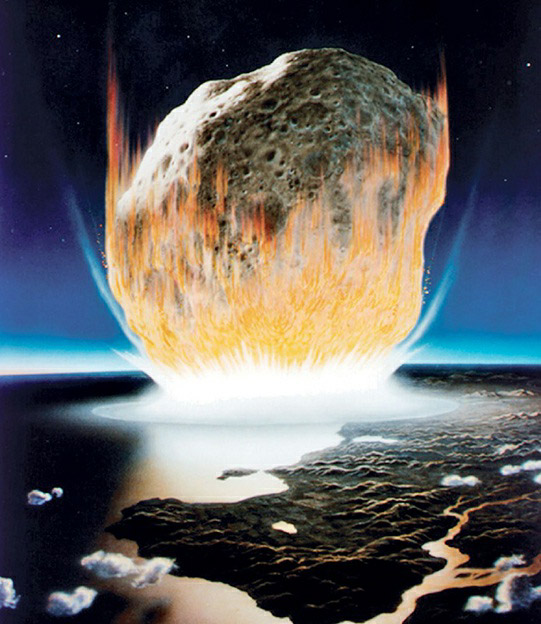The extinction of the dinosaurs, a significant event in Earth’s history, occurred about 65 million years ago, at the boundary between the Cretaceous and Paleogene geologic periods. This mass extinction was largely attributed to the impact of a large asteroid, a theory supported by the discovery of a global layer of sediment enriched in iridium. Iridium, a heavy metal often found in metal-bearing asteroids, is unusual in Earth’s crust due to its tendency to bond with iron in rocks and minerals and its prevalence in the deep mantle and core.
The asteroid’s impact would have caused catastrophic changes, including the vaporization of rock and dust that would have lifted into the atmosphere, igniting widespread fires and filling the sky with soot and smoke. This would have effectively blocked sunlight, leading to a significant drop in global surface temperatures for years. The impact’s effect, while not as devastating as the Permian-Triassic extinction event 252 million years ago, still led to the decimation of species that depended on sunlight and photosynthesis, including the ancient dinosaurs.
Some species, however, managed to survive this cataclysmic event. Mammals and birds, capable of burrowing or subsisting on alternative food sources like insects and carrion, were not driven to extinction. The asteroid impact hypothesis continues to be a subject of ongoing scientific research and testing. Additionally, other geologic and climatic factors, such as changes in atmospheric oxygen, sea-level fluctuations, and volcanic eruptions, have also played roles in Earth’s history of mass extinctions. This suggests that multiple events may have contributed to the environmental conditions leading to these significant die-offs.

